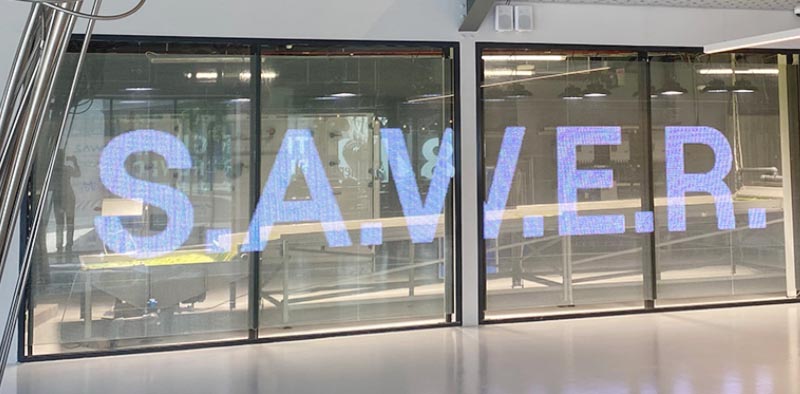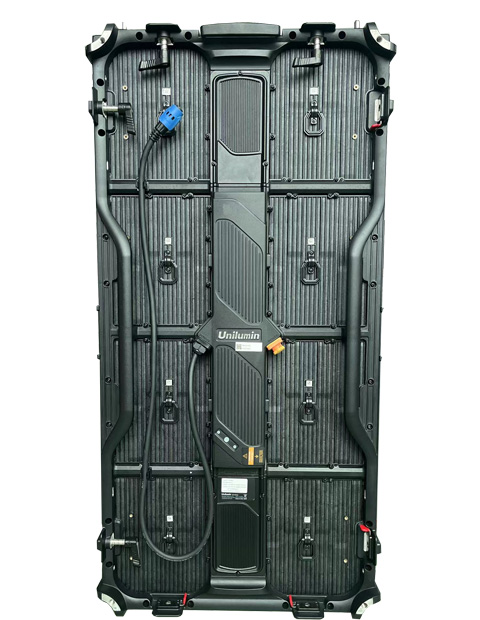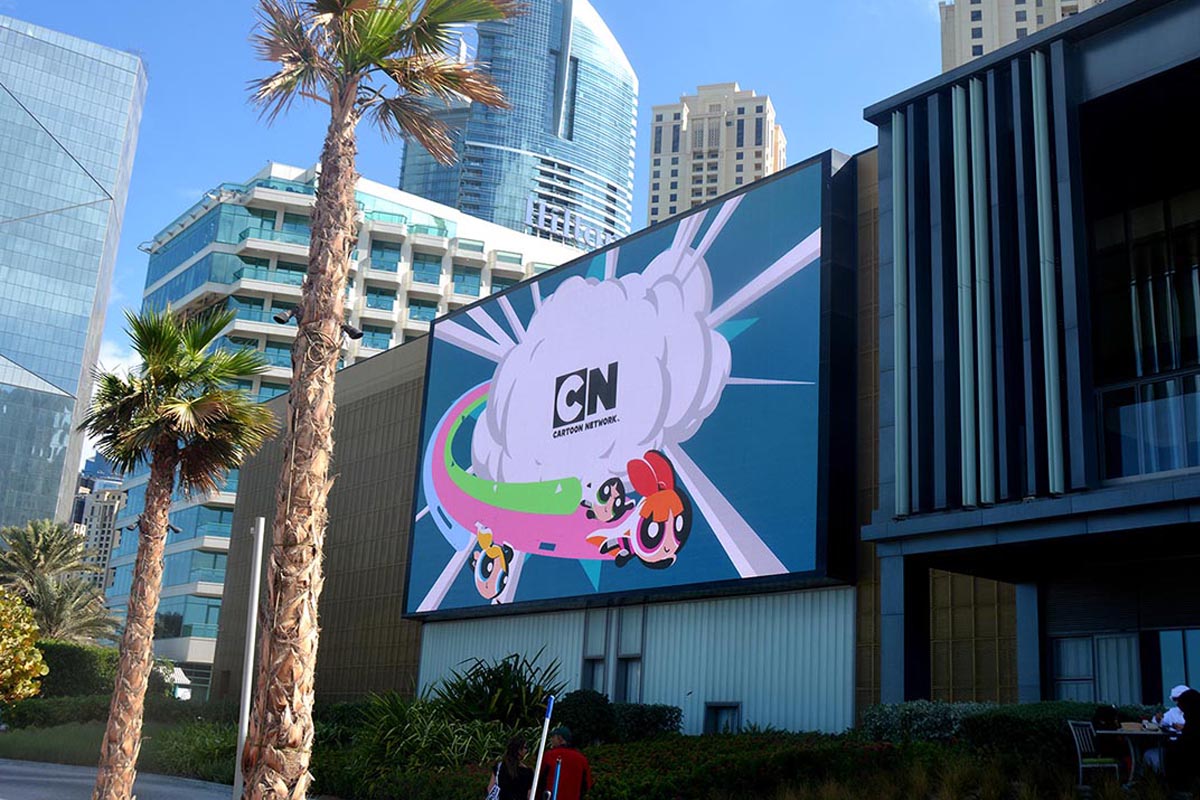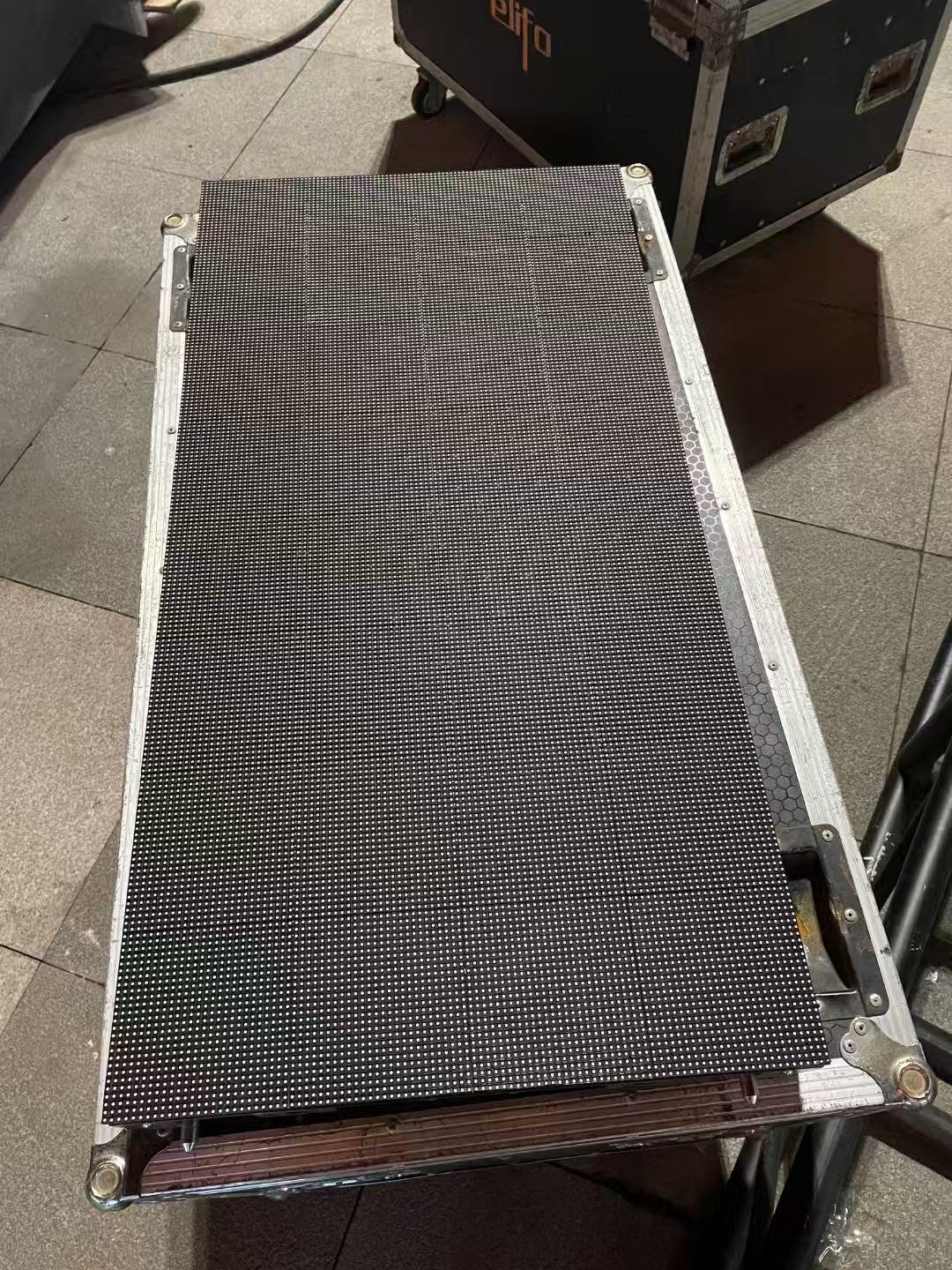The power consumption of an electrical appliance is calculated based on its electrical power. To calculate this, multiply the current by voltage.
In actual usage, power calculations divide loads into two categories: resistive load and inductive load.
This article will guide you the details of LED display power consumption, cable size and other related issues.
Factors that affect the power consumption of LED screens
When we calculate the power consumption of LED displays, let us first understand some knowledge. What are the factors that affect the power consumption of LED screens?
- The quality of LED chips. The quality of the LED chip directly affects the luminous efficiency of the LED screen and directly determines the power consumption. High-quality LED chips consume less power under the same brightness. In other words, the same power consumption can achieve higher brightness.
- Drive scheme. Different power drive solutions will affect the power consumption of LED transparent screens. An efficient power drive IC solution can significantly reduce power consumption while ensuring display effects.
- Operating mode. The working mode of the LED screen will also affect its power consumption. For example, when the screen works in full-color mode, the power consumption will be significantly greater than when working in monochrome or dual-color mode. In addition, the complexity of the display content may also affect power consumption. The more complex the dynamic display content, the greater the power consumption.
- Operating temperature. Ambient temperature has an important impact on the working efficiency and lifespan of LEDs. The ideal working temperature can ensure the efficient output of LED transparent screens and effectively reduce power consumption.
- Dimming technology. The use of advanced dimming technology, such as PWM dimming technology, can ensure that power consumption is greatly reduced without affecting the display effect of the LED screen.
How to Calculate LED display power consumption
Calculating the resistive load: P = UI, i.e. power = voltage x Current
Calculating inductive loads: P=UIcosf – that is power = voltage * current * power factor
LED display screen is an inductive power load that is powered by switching power supply. Cosf = 0.75 is the power factor for its switching power supply. Power factors are different for inductive loads. We can use a power factor of 0.8 when calculating the power supply for the LED display switching supply.
The driving voltage of LED display screen is 5V and its driving current is under 20mA. Calculate the maximum power of a screen (based on a 100-square-meter area) as follows:
Imagine the following: the pixel pitch of the outdoor LED display is 10mm; the pitch density is 10,000 pixels/square meter; each point is composed of three LED lights – one red, one green, and one blue – and the scanning is 1/4 scan.
Calculation of LED display Power per Square Meter: P = 10000 (dots).
The total power consumption for the LED display screen is: P=750 (W) * 100 (square meters) =75KW
The power consumption of the whole LED screen
Due to losses in the conversion of electric energy, 10% is added on top of the calculated theoretical value. Auxiliary equipment (air conditioners and fans) and lighting, amplifiers, and other devices also consumes some electricity. Calculate the power consumption of auxiliary equipment for the LED screen based upon the actual amount.
P= 75KW+7.5 KW +5KW =87.5KW
The maximum current of the display is:
I=P/Ucosf=87500(watt)/220*0.8(cosf)=318(A)
Under normal conditions of operation, however, LEDs cannot be light up for long periods. If the power supply capacity of the user is low, then a formula based on a common coefficient can be used. The common coefficient in this case is usually 0.5. The above calculation is rewritten to:
I=P*Public coefficient/Ucosf=(82500 (watt)*0.5+5000 (watt))/220*0.8 (cosf)=168(A)
The total current of this LED display is 168A. Because the instantaneous current when the LED display is started is relatively large, the three-phase 168A switch cannot be used for the main air switch.
It is recommended to use a 318A air-switch, but 400A will suffice. Our fellow engineers are used to calculating the power of large displays by using the number switching power supplies across the LED screen. This method is not standard. Some manufacturers cut the number of switching supplies to save money, but this leads to inaccurate power calculations.
Above we have explained some common methods for calculating the power consumption of LED screens. Let us take an example of calculating the power consumption of a transparent LED screen in detail.
How to calculate the power consumption and electricity bill of a transparent LED screen

The power consumption of the LED transparent screen is related to the area, usage time, and average power consumption, and is affected by two configuration factors:
- high brightness
- low brightness.
The following takes P7.8 (cabinet size 1000mm*1000mm, 1 square meter) as an example.
Low brightness P 7.8 power consumption
The low-brightness P7.8 LED transparent screen adopts positive light-emitting technology and has a brightness of about 2500cd/㎡. It is generally used for indoor environments, such as showrooms, exhibition halls, etc.
The average power consumption is about 240W/㎡, when use 10 hours:
240×10×1 =2400W=2.4KW
Calculated based on the industrial electricity consumption of 0.8 yuan/kWh, the electricity fee is 1.92 yuan.
Assuming that the total LED screen area is 20 square meters and the screen is worked 25 days a month. The total monthly electricity bill is 1.92×20×25=960 yuan.
High brightness P 7.8 power consumption
The high-brightness P7.8 LED transparent screen adopts side-emitting technology and has a brightness of about 5500cd/㎡. It is generally for commercial buildings, glass showcases of brand chain stores, etc.
The average power consumption is about 300W/㎡, and when use 10 hours:
300×10×1 =3000W
Calculated based on the industrial electricity consumption of 0.8 yuan/kWh, the electricity fee is 2.4 yuan.
Assuming that the total screen area is 20 square meters and the screen is worked 25 days a month, the total monthly electricity bill is 2.4×20×25=1,200 yuan.
You can learn more:
- Top 10 Transparent LED Screen Manufacturers
- P3 Vs. P5 Transparent LED Displays
How to Calculate LED display power Cable Size?
Average power consumption:
Power consumption is affected by the type of content that’s being played. When playing advertisements, which are mainly white and rich in colors, the average consumption of power is 50%. However, when simple graphics, such as text or images, are displayed, the majority of the LED screen will be black and the average consumption of power is 10%. Normal advertising statistics show that the average power usage is usually 40% of the maximum.
The general method for calculating the safety of copper wire is:
| Copper Cable Size (mm²) | Maximum Safe Current Carrying Capacity (A) |
|---|---|
| 2.5 | 28A |
| 4 | 35A |
| 6 | 48A |
| 10 | 65A |
| 16 | 91A |
| 25 | 120A |
Aluminum wire should have a diameter 1.5-2 times greater than copper wire.
It is safe to use 10A per sq. millimeter if the current in copper wire is less than 28A.
If the copper wire is more than 120A in current, multiply it by 5A per square mm.
You can select the current that the conductor’s cross-sectional area can normally carry based on the number of currents you need to conduct. It can be estimated by using the following experience.
if you remember that copper wires with a diameter of less than 6 square millimeters for indoors are safe if the current per square meter does not exceed 10A. From this perspective, you can choose 1.5 square meters of copper wire or 2.5 square meters of aluminum wire.
The wire current density should be 6A/mm2 within 10 meters. This is the most suitable. The wire current density should be 3A/mm2 for 10-50 meters. 50-200 meters is 2A/mm2. Above 500 meters it should not exceed 1A/mm2.
If it’s not too far, you can use 4 square meters copper wire, or 6 square metres aluminum wire. If the power source is 150 meters away, regardless of whether it’s a high-rise or not, 4 square meters copper wire is required.
The impedance is directly proportional with the length of a wire and inversely related to its diameter. Pay attention to the wire diameter and material of input and output wires when using a power supply. Preventing excessive current from heating the wires, causing accidents.
This table shows the diameter of copper wires at various temperatures and their maximum current.
| Cable size/temperature/A | 60 | 75 | 85 | 90 |
| 2.5 | 20 | 20 | 25 | 25 |
| 4.0 | 25 | 25 | 30 | 30 |
| 6.0 | 30 | 35 | 40 | 40 |
| 8.0 | 40 | 50 | 55 | 55 |
| 14 | 55 | 65 | 70 | 75 |
| 22 | 70 | 85 | 95 | 95 |
| 30 | 85 | 100 | 100 | 110 |
| 38 | 95 | 115 | 125 | 130 |
| 50 | 110 | 130 | 145 | 150 |
| 60 | 125 | 150 | 165 | 170 |
| 70 | 145 | 175 | 190 | 195 |
| 80 | 165 | 200 | 215 | 225 |
| 100 | 195 | 230 | 250 | 260 |
The diameter of the wire is calculated using this formula: Copper wire S= IL/ 54.4*U
Aluminum wire: S= IL / 34*U`
In the formula, I is the maximum current that can pass through the wire.
The length of the wire is measured in M.
U `—- Allowable power supply drops (V)
S —-Cross sectional area of conductor (MM2):
The U voltage can be chosen based on a range of equipment, such as detectors, used throughout the entire system. Also the voltage rating for the power supply used to power the whole system.
The maximum current safe to be charged by three-phase power is three times that of the previous calculation. Therefore, the 25-square meter four-wire, three-phase cable (4+1), which is the national standard and can be used. A cumulative discount calculation will be required if the cable wiring is longer than a specified length, is located in an environment with high temperatures, or is concealed.
Otherwise, it could affect normal usage and cause the cable heating up. Circuit breakers without graded power supplies should also be replaced every 5 years. Frequent switching of current and voltage will result in electric shocks and premature aging. This leads to poor contact between the circuit breakers. Electrical fires can occur if the above items are not taken serious.
Above we introduce the method of calculating the power consumption and size of LED screens. We hope it will be helpful to you. Finally, we give you some practical suggestions to help you better reduce power consumption.
How to reduce LED display power consumption?
After the LED display is installed, the power consumption of the LED screen will be the largest expenditure for operation. So is there any way to reduce energy consumption?
Reduce the brightness of the LED display: If the LED screen meets your image quality needs, you can consider lowering the brightness of the LED display, which can significantly reduce energy consumption. You can adjust the appropriate brightness level according to the ambient brightness and viewing needs.
Use power saver mode: Many LED displays offer a power saver mode option. You can turn on the energy-saving mode, which can not only significantly extend the life of the LED display lamp beads, but also reduce energy consumption.
Shorter standby time: Shorter standby time reduces energy waste. You can set the display’s standby time to be as short as possible.
Reduce animation and special effects: Animation and special effects generally require more energy to render. You can reduce the number of animations and effects used on the display, for example, by simplifying the interface, turning off visual effects, or reducing transition animations.
Optimize content: Use more concise and streamlined images and video content. For example, when you only use it for document or text display, you can use black background display to save power.
Timing off the LED display: If you do not need to use the display for a long time, you can set the timer off function.
Use energy-saving hardware: Choose to replace LED display with energy-saving functions. For example: IAMLED LED screens have a low-power mode, which can reduce energy consumption without reducing display quality.
In conclusion
Above we have introduced the relevant knowledge about calculating the energy consumption of LED screens. Not only do we can calculate operating costs, but it is also best to reduce LED losses from the source, such as choosing an energy-saving LED screen. If you have needs, you can consider GDHANHENG



